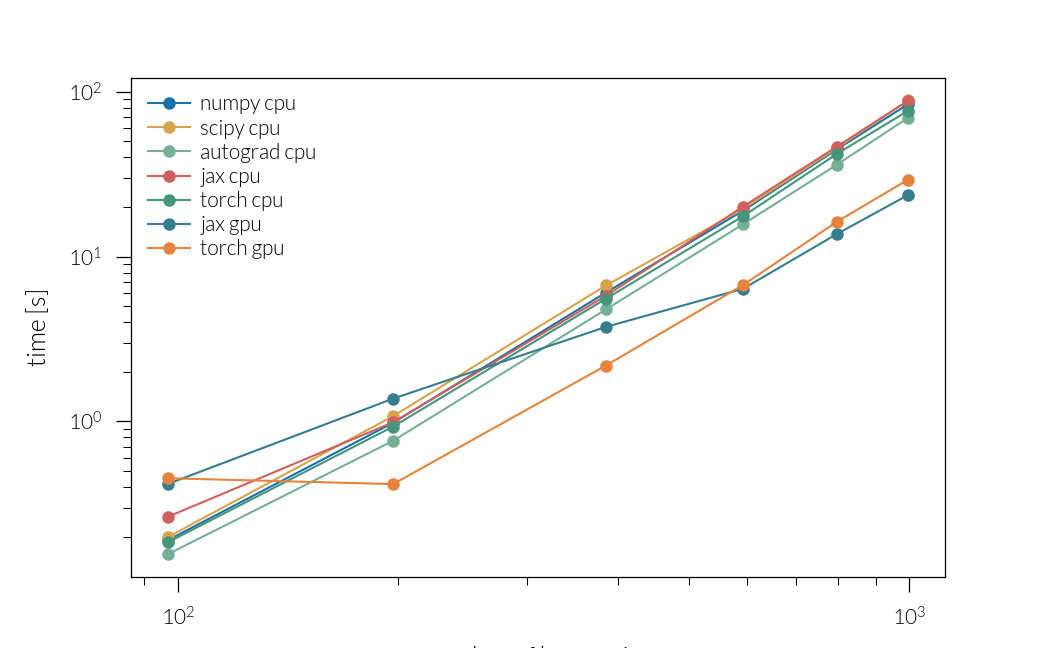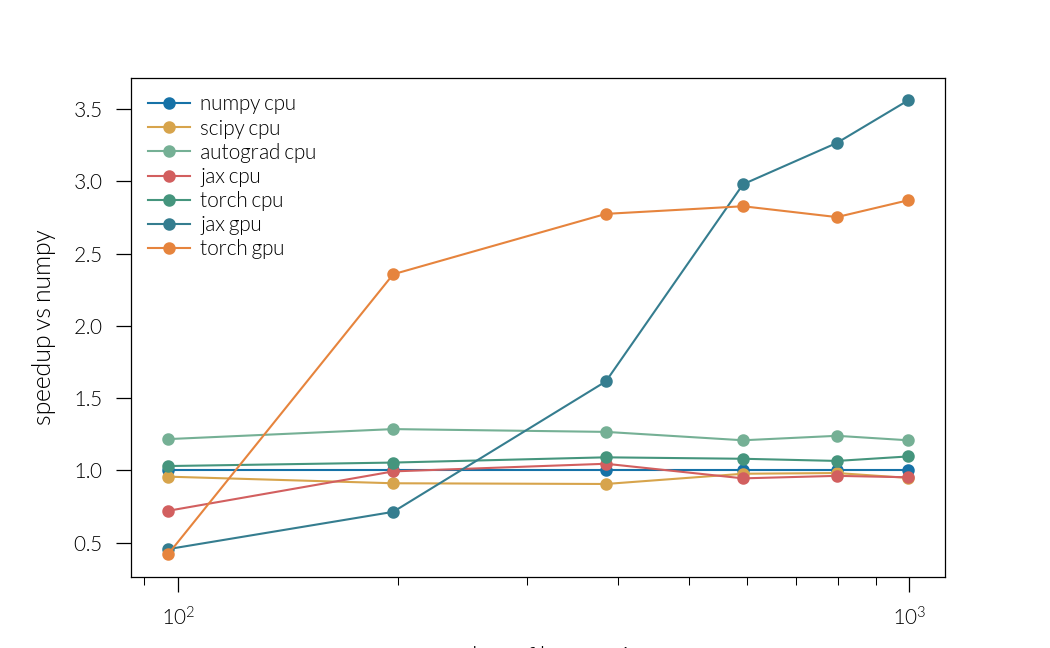Note
Go to the end to download the full example code. or to run this example in your browser via Binder
Benchmark Modal#
Numerical backends performace comparison, with GPU acceleration, as run on Modal (https://modal.com)
import os
import matplotlib.pyplot as plt
import numpy as np
backends = ["numpy", "scipy", "autograd", "jax", "torch"]
inputs = [(b, "cpu") for b in backends]
inputs += [(b, "gpu") for b in ["jax", "torch"]]
t = []
plt.figure()
for i in inputs:
backend, device = i
fname = f"modal/benchmark_{backend}_{device}.npz"
arch = np.load(fname)
times = arch["times"]
times_all = arch["times_all"]
real_nh = arch["real_nh"]
nh = arch["nh"]
t.append(times_all)
plt.plot(real_nh, times_all, "-o", label=f"{backend} {device}")
plt.legend()
plt.xlabel("number of harmonics")
plt.ylabel("time [s]")
plt.xscale("log")
plt.yscale("log")
plt.figure()
for j, i in enumerate(inputs):
backend, device = i
plt.plot(real_nh, t[0] / t[j], "-o", label=f"{backend} {device}")
plt.legend()
plt.xlabel("number of harmonics")
plt.ylabel("speedup vs numpy")
plt.xscale("log")
# plt.yscale("log")
Total running time of the script: (0 minutes 0.667 seconds)
Estimated memory usage: 520 MB



